In this rapidly changing world of branding, marketing and digital communications, keeping up to speed can be overwhelming.
Fortunately, some aspects of the human condition don’t change!
We all love a good story!

As neuroscience has helped us to understand, our brains are hardwired to respond to a riveting plot.
And so, the most effective method of capturing and keeping the audience’s attention is through compelling stories that connect on an emotional level.
Never underestimate the value of a jolly good tale!
In this article, you’ll discover what brand storytelling is and gain inspiration from a few compelling examples.
5 Captivating Brand Storytelling Examples
One-click subscribe for video updates
What Is Brand Storytelling?

Brand storytelling is about crafting a brand’s narrative, sharing the story of how it has progressed from its inception to its present form.
It’s about helping to draw the line for the consumer from the origin, including its mission statement and brand values, to where the brand is today, highlighting a consistent core messaging even if the brand has evolved.
The brand, therefore, is essentially the main character, and the target audience goes on a journey with the main character.
In any good story, if told well, the reader develops an emotional connection with the main character, cares about their wellbeing, and is ultimately loyal to them.
To shift back to branding terms, tell the story well, and a high-quality brand strategist will make the consumer develop brand loyalty through a great brand story that people buy into.
Why Is Brand Storytelling Important?

Brand storytelling is a hugely effective tool in connecting with an audience and enhances any brand strategy, marketing strategy or content marketing strategy on numerous levels.
PRO Brand Strategy BluePrint
Build Brands Like A Pro Brand Strategist

Positioning

Positioning is branding 101. Without a clear positioning strategy, a brand is about as visible as a snow leopard in Alaska.
Modern brands must make a concerted effort to clarify their position in relation to their competitors in the market.
After all, no brand exists in a vacuum.
Crafting a clear brand story, and communicating it well, can help differentiate a brand from the competition.
Explore Brand Strategy
Programs & Tools
Positioning Example: Stella Artois vs Brewdog
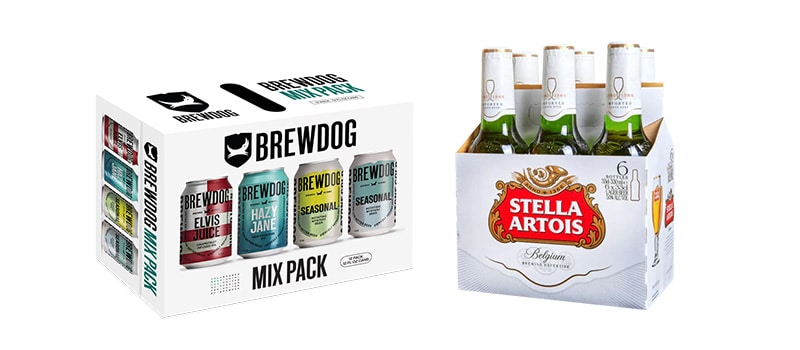
For example, let’s take two competing brands in the beer industry:
Stella Artois and Brewdog.
They compete for a similar target audience yet aim to build an emotional response through two distinct brand stories.
Stella Artois makes a big deal of its heritage, founded in 1366 by Belgian monks.
Therefore, you can trust their product; they’re playing the tried and trusted, stands the test of time card.
Their unique value is found in tradition and heritage and the appeal of drinking a beverage that has been brewed for centuries.
Brewdog, on the other hand, has no such heritage.
Their brand story plays on their status as underdog newcomers.
Therefore, they’re here to shake up the industry with new flavours and fresh approaches.
Without deep-diving into the intricacies of each brand strategy, you can see how the stories behind these competing brands communicate their respective positions in a competitive market.
Both stories have the potential to appeal to the target audience, but for vastly different reasons.
Emotion Sells

Emotion sells in a saturated field where many brands are vying for attention.
The days when a brand could rely on a good product or service at a reasonable price as a sales strategy are long gone.
We simply have no tolerance for the kind of push marketing that saw companies simply try to get products or services in front of our faces.
With the advent of digital marketing and social media strategies, where brands have several communication channels to compete for diminishing audience attention spans, the ability to tell stories is vital.
Successful brand storytelling creates an emotional response, which is the key to stopping people from scrolling and making them pay attention to what a brand has to say.
Marketing campaigns encouraging customers to emotionally invest in a brand’s core values have the best chance of cutting through the noise and getting people to notice.
Of course, the logic follows that you have a better chance of making a sale by holding the audience’s attention.
How To Tell A Powerful Brand Story

So, how can brand strategists harness the power of storytelling?
Let’s explore seven different branding storytelling strategies to leverage in 2022.
#1. Highlight Challenges Of The Consumer

We like to see ourselves as the all-conquering heroes in a story.
Therefore, a compelling brand story should incorporate the challenges for the consumer that, together, you can overcome.
Telling a story of familiar challenges overcome en route to a triumphant outcome is the evergreen formula for connecting with the audience.
This way, a brand places the consumer’s story in alignment with the product, creating a narrative whereby the brand and consumer conquer a challenge on a joint quest!
For example, let’s take Nike’s brand story.
The overarching problem to solve is that, for various reasons, it can be challenging to improve athletic performance.
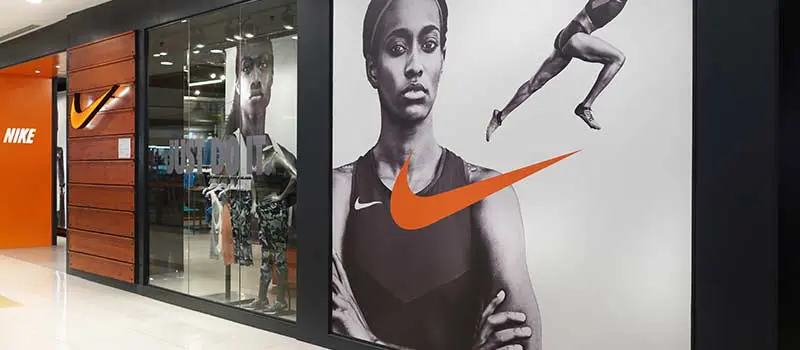
Nike frames itself as a solution, combining products that can enhance performance, regardless of athletic ability, with a brand mentality encapsulated with the slogan “Just Do It.”
The story told is that you, the consumer, face a challenge, but you can overcome this obstacle by investing in Nike’s products supported by their philosophy.
Buy Nike trainers to overcome that challenge, i.e., running further, playing better football, jumping higher to dunk, etc.
Nike rehashes this story through all its marketing campaigns, showing how its products make a difference for real people.
In this way, the brand story focuses on what it can do for real-life aspiring athletes worldwide.
#2. Show Empathy
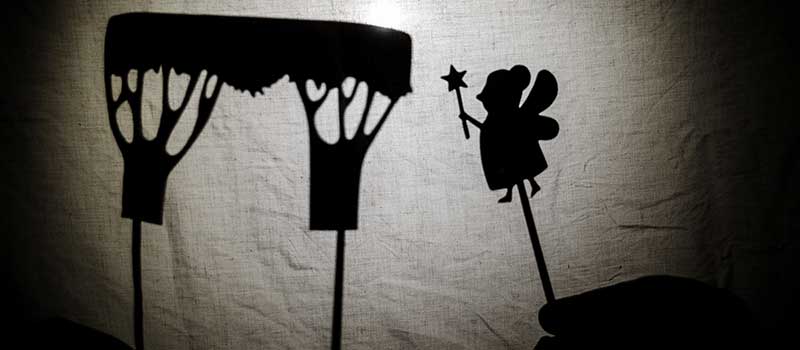
Showing empathy is an extension of highlighting a consumer’s challenges but goes further.
Again, this taps into the science of the human condition: we like to be understood.
Crafting a brand story based on understanding and empathy will go a long way to fostering trust with the customer.
Consumers tend to make repeat purchases with brands they know, like, and trust to have their back.
#3. Support Pre-Held Belief Systems

Create a content strategy and tell stories that align with the audience’s belief systems.
Again, quite a running theme here, but brands nowadays need to do more than purely offer a product or service.
A successful brand story humanizes the company by sharing its worldview and what it stands for while also communicating to the audience; we understand your story too.
A brand strategist will ensure the brand’s worldview aligns with that of its target market, not as a marketing tactic, but to ensure they’re targeting the right market.
Why?
Well, it’s all about making that connection.
If consumers see a brand story supporting their beliefs, they are more likely to relate to the company.
By extension, they’ll keep that company top of mind when considering a purchasing decision.
This belief system can be expressed through corporate social responsibility drives, blog content, ad campaigns, social media interactions or any form of communication at any touchpoint.
There are many avenues through which a brand can tell this element of its story.
#4. Turn Up The Emotions

Emotion and stories go hand-in-hand.
When it comes to brands, the more relevant the emotion in the stories you tell, the more likely you’ll make the relevant connections and evoke the intended emotional response.
Let’s think about the fundamentals again.
We humans have desires. We have fears. We crave success and want to avoid failure.
In your brand storytelling, it pays to raise the stakes of these emotions for the consumer.
Share the success stories concerning the product or service while subtly tapping into the idea that the consumer can overcome their challenges with the offered product or service.
Let’s refer back to those Nike campaigns.
Think about the stakes at play in some of their storytelling.
Success or failure on the playing field.
Champions or losers.
It’s only an ad to sell activewear, yet we’re brought into the world of the human desire to compete and progress.
The implied message of its storytelling?
Nike is here to motivate you and increase your chances of success through its products.

Share details about the brand journey and how the products or services provide solutions.
Consumers like to feel invested in a brand story.
A faceless, impersonal company without stories can often be unrelatable.
Instead, share rich details about where the brand has come from and where it’s going.
Most importantly, share infromation about who it’s helping and the challenges it’s helping with.
Extend this mentality of sharing through all content.
Be open and honest about what goes on behind the scenes and the creative process.
Put public faces to the people behind the company through platforms like LinkedIn.
While this may look different depending on the size of the company and industry, the critical point here is that detail shared about the brand story can help the audience connect to the business.
It’s important that all stories align with reality, though illuminating the details can help bring a bland story to life .
#6. Celebrate Successes

We touched on this concerning emotions, but it warrants a separate point.
Consumers buy products or services and expect a positive outcome.
So, share case studies regularly showcasing how the product or service leads to positive customer outcomes and detail-rich achievements.
Social proof influences new customers to take the plunge and purchase.
Make sure, through market research, that you are absolutely clear on what customers want to achieve and their most important buying factors, and share the evidence of how the brand can provide this for them.
Paint out the clear picture in detail of the buyer journey that ends with happy, satisfied customers.
#7. Highlight The Customer’s Journey

User-generated content is a relatively modern aspect of Marketing.
There are so many expert content creators who share stories through various platforms, including social media.
Great brands harness this and incentivise their customers to create branded content and incorporate this into their brand story.
GoPro is a classic example of this, where marketing campaigns have been built around customer video making using the product.
Apple created a similar campaign advertising the quality of their latest cameras by showcasing user ‘amateur’ photography in their ad campaigns.
This method works on numerous levels for brands.

First, in a world where we have zero tolerance for sales pitches and overt ad campaigns, user-generated content is valuable since there’s a perception that there is an organic, wholesome element to this content.
It’s a kind of “by the people, for the people” dynamic at play.
Second is the organic nature of this type of content and how it fits in seamlessly into social media feeds as content that’s “not just another ad”.
Though many industries will find this challenging, it certainly pays to incorporate real-life stories into your brand story.
This inclusion humanizes the brand while also highlighting the strengths of the product or service.
Brand Storytelling Examples
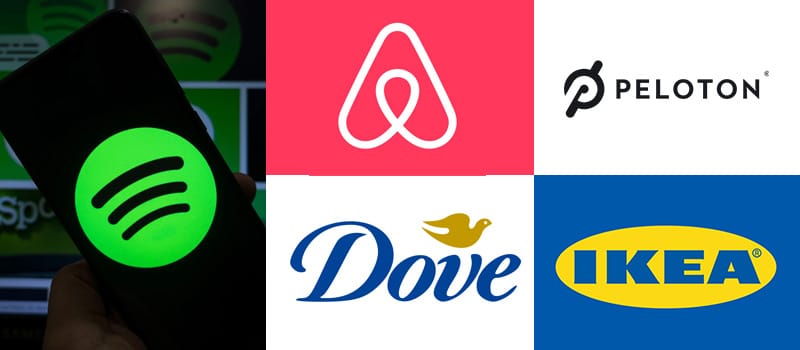
It’s all well and good hearing the theory of brand storytelling, but just like any good story, you have to immerse yourself to get the full picture.
With that said, let’s look at some of the best examples of brand storytelling.
#1. Spotify

Spotify is a fantastic example of how modern brands incorporate data into their brand storytelling.
Spotify leverages its ability to collect vast amounts of user data to inform its marketing campaigns.
They have an annual campaign called “Spotify Wrapped”. The campaign allows users to reflect on their last year’s listening habits on the music-streaming platform.
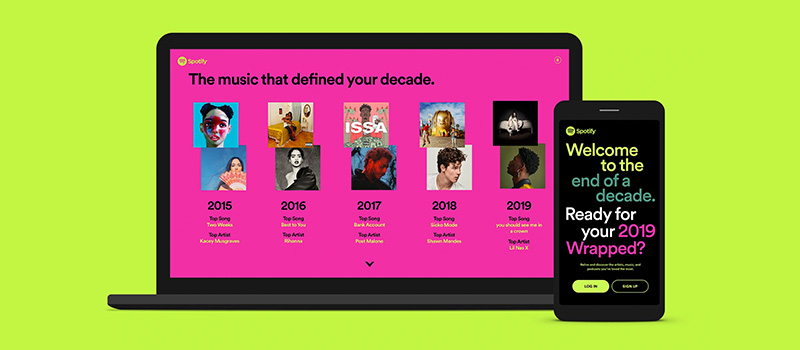
In sharing these data-driven insights, Spotify plays on the idea of nostalgia, developing that emotional connection with the user as they celebrate the past year of music.
The hyper-personalization of this service also sends the message to customers that Spotify cares about its users.
This level of care is further celebrated as Spotify highlights user stories in witty, comical advertisements that celebrate different customers’ musical interests.
By sharing comical references to user playlist choices, the brand reinforces its story of a brand that places personalisation at the heart of everything it does.
#2. Airbnb
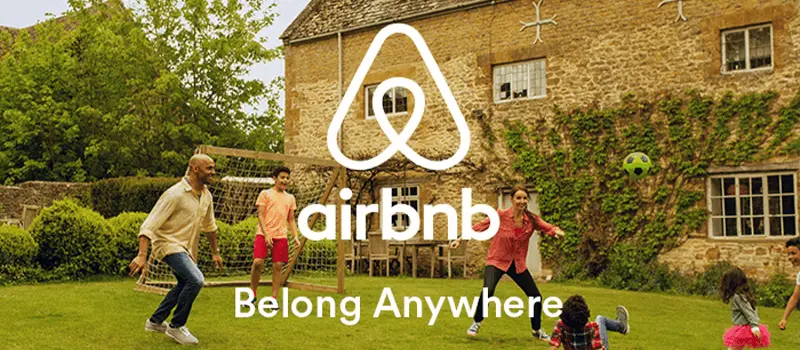
Airbnb’s brand storytelling centres around ideas of community and belonging.
The brand slogan is “Belong Everywhere”.
The brand’s logo comprises a collection of symbols celebrating people, places, and love.
From this foundation, Airbnb tells the story of how it facilitates these beautiful, engaging exchanges between people as they travel the world and stay in people’s homes.
This storytelling frames Airbnb as a human-focused brand, positioning itself as much more personal than other accommodation providers.
The brand highlights this in marketing campaigns and website content, placing user stories at the heart of the brand story.
These Airbnb user stories of discovery and international connections are emotive while highlighting Airbnb’s role in facilitating these exchanges.
#3. Dove

Dove is a company that sells beautification products. Their products provide solutions to irritated skin, damaged hair, body odour etc.
However, their brand storytelling efforts do not focus on the idea of beautification.
Instead, their marketing campaigns focus on removing the negativity and self-esteem issues surrounding self-image.
They run the Dove ‘self-esteem project’ that raises awareness of the toxicity of some elements of the beauty industry.
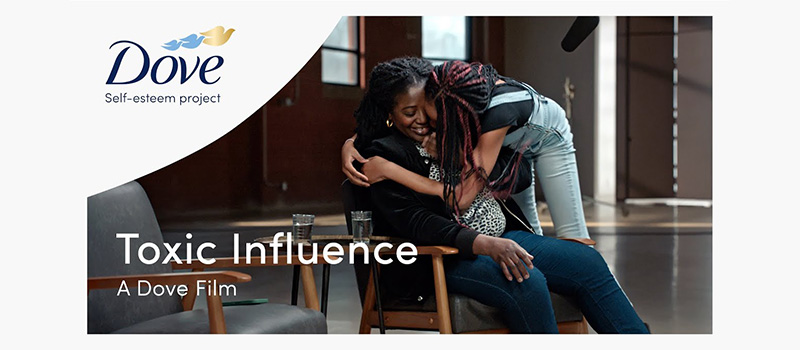
It aims to encourage customers to celebrate beauty in all its forms, on both the outside and inside.
They share empowering user stories and celebrate customers’ successes who feel better about themselves with a changed outlook.
These efforts tap into the audience’s concerns and build a connection between the brand and a more positive outlook on beauty.
#4. IKEA
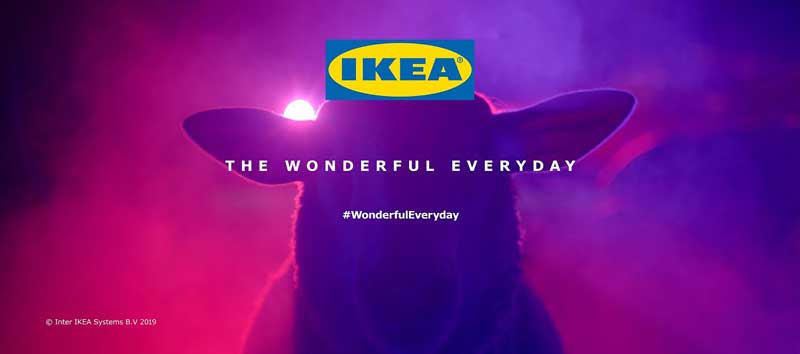
Ikea frames itself as so much more than a provider of sleek, affordable, Scandinavian-inspired furniture.
Instead, their brand storytelling focuses on the notion that they are making lives more convenient.
Their About Us page highlights that their vision has remained the same over the years: “to create a better everyday life for the many people.”
Ikea products offer intelligent solutions, helping customers organize and design their homes in ways that actually improve their lives.
It shows empathy by understanding that customers face everyday challenges and then provides its products as solutions to those challenges.

Another element of its brand storytelling is its focus on environmental sustainability initiatives.
This strategy plays on the idea of the Earth of our broader home beyond the four walls of our houses and that we must protect it.
This is an example of a brand communicating a worldview that aligns with the belief systems of its customers, striking a chord that leads to increased brand loyalty.
#5. Peloton

Peloton is a brand centred around motivating customers to push themselves. Their fitness equipment provides a foundation for a lifestyle in which customers are motivated to reach their full fitness potential and hit goals.
The brand supports this idea through its collaborations.
In 2021, the brand teamed up with Beyonce to launch three days of limited edition classes. These classes allowed Peloton members to work out just like the music icon.
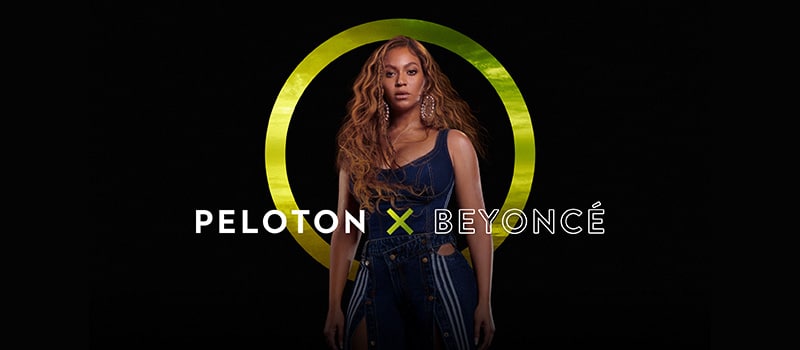
This kind of collaboration aligns with Peloton’s brand storytelling. Beyonce’s music and image include similar themes that Peloton look to tap into; inner strength, courage, pushing boundaries, and confidence.
Peloton backed up the collaboration by supporting Beyonce’s racial justice campaigns.
Peloton announced free equipment and memberships would be given to several historically Black universities in the US.
This marketing campaign is an excellent example of how a brand can use collaborations to appeal to its audience in a way that reinforces an established brand story and the role the brand plays in the bigger picture.
How to Introduce Brand Storytelling to Your Marketing

Telling a great brand story creates an emotional connection between the brand and the consumer.
Harnessing this emotional connection over time will lead to brand loyalty as the customer buys into and supports the brand story.
Furthermore, a great brand story is vital to differentiate the brand from its competitors, cutting through the noise in a competitive marketplace.
In this way, we can say brand storytelling is crucial to a brand positioning strategy.
If these are the reasons to nail brand storytelling, how do you introduce the brand story into marketing?

Any marketing activity needs to be grounded in research.
Brand storytelling relies heavily on research into the target audience since a brand strategist needs to tell a narrative that resonates with them.
After conducting significant research into the audience, take those insights into seven strategies for a powerful brand story:
Highlight Challenges
Turn Up The Emotions
Show Empathy
Support Beliefs
Share Detail
Celebrate Success
Highlight The Cusomer’s Journey
Lastly, ensure that the brand story you land on is told consistently through all brand elements to present a unilateral brand story to the audience through every point of contact.
On-Demand Digital Program
Brand Master Secrets
Make the transition from hired-gun to highly valued brand strategist in less than 30 days. The systems, frameworks and tools inside this comprehensive program are all you need to level up.








